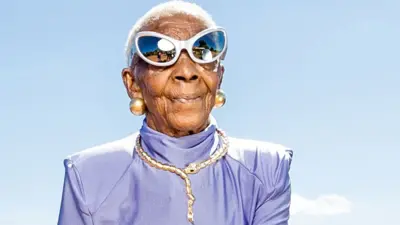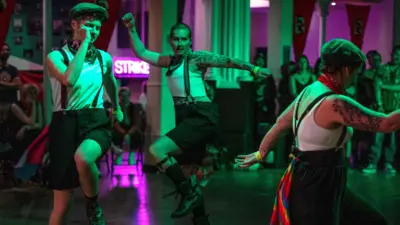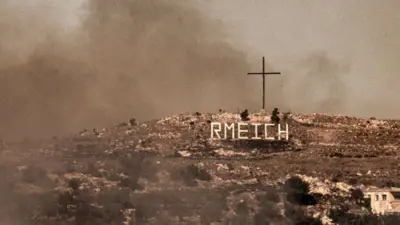We've updated our Privacy and Cookies Policy
We've made some important changes to our Privacy and Cookies Policy and we want you to know what this means for you and your data.
'Racist' Native American tapestry 'should not be displayed'
A British tapestry depicting Native Americans as "subhuman, warlike savages" should not be put on public show, campaigners say.
The 267ft (81m) New World Tapestry perpetuates a "racist tradition", the National Congress of American Indians (NCAI) said.
But designer Tom Mor said the claims were "rubbish".
The work, depicting North American colonisation between 1583 and 1642, may feature in an upcoming anniversary.
It took 256 volunteers from Devon and Dorset 20 years to complete the tapestry, with the final stitch sewn by Prince Charles in 2000.
It was put into storage in 2008 by Bristol City Museum because of its size.
However, sections have since been made and could be displayed as part of plans to mark 400 years since the Mayflower left Plymouth, taking Protestant settlers to North America.
'Misinformed opinions'
Jacqueline Pata, executive director of NCAI, said the tapestry's depictions of Native Americans were "inaccurate" and should be removed from the public domain.
"It shamelessly perpetuates a centuries-long artistic tradition that seeks to portray Native people as subhuman, warlike savages.
"Unfortunately, too many Americans form their misinformed opinions of Native people based on such inaccurate, harmful depictions of who we supposedly were and are, as somehow 'less than' other Americans.
"It is time for this racist tradition in all of its forms - whether art tapestries or football helmet logos - to end, once and for all."
But Mr Mor said there was nothing racist about the depictions of Native Americans, who were represented in the same cartoon style as the colonisers.
"It's rubbish, it's not racist, what's racist about it?," he said.
"Mine is a cartoon, but it is a reality.
"It's reality, we slaughtered the Native Americans, and they slaughtered us.
"It's no use pretending about it or being shocked by it."
The depictions were based on watercolour drawings by 16th Century artist John White, Mr Mor explained.
Top Stories
More to explore
Most read
Content is not available








